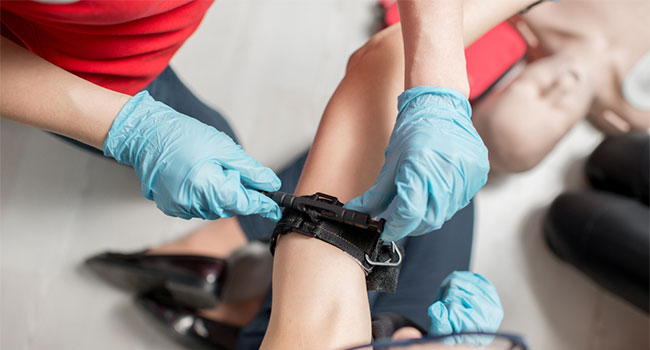
Stop the Bleed Kits Gain New Attention After Use in Santa Clarita Shooting
The kits, which include tourniquets and compression bandages, can save lives outside of active shooter incidents, according to advocates and medical experts.
- By Haley Samsel
- December 09, 2019
When tragedy struck a Santa Clarita, Calif. high school last month in the form of a shooting that ended with three student deaths, staff members were better prepared to respond to the attack thanks to bleeding control kits stored in every classroom.
Two of the kits were used in the Nov. 14 shooting, in which a student killed two fellow students before turning the gun on himself. The kits, which include tourniquets, compression bandages and blood-clotting gauze, were a recent addition to classrooms in the district, NBC News reported.
"Although there's no way for us to prevent tragedies like this that happen, we can take a precaution and be able to protect people and know that there is information out there and supplies people can use to keep them safe," Cambria Lawrence, a student who raised funds for Stop the Bleed kits in Santa Clarita, told LAist.
Advocacy efforts to bring the kits to classrooms across the country have been growing over the past several years, particularly in states where legislation concerning gun control is unlikely to pass, according to NBC News.
Georgia was the first to pass a statewide initiative to equip all classrooms with Stop the Bleed Kits in the 2017-2018 year. This year, state legislatures in Texas, Arkansas and Indiana have adopted similar policies, and Illinois plans to distribute 7,000 kits to public schools across the state.
The kits are not just helpful for active shooter situations, which will not affect the vast majority of campuses. Most fatal injuries are caused by falls, according to Billy Kunkle, the deputy director for the Georgia Trauma Commission. The tourniquets including in the bleeding control kits can save lives and should be viewed as an extension of a first aid kit, Kunkle told NBC.
Dr. Lenworth Jacobs, who served as a surgeon at the trauma center closest to Sandy Hook Elementary in Newtown, Conn., has been advocating for measures to improve the survival rate in mass shootings through the Hartford Consensus coalition. Those recommendations for legislators have included Stop the Bleed campaigns, which have reached 100 countries and 1.5 million people, Jacobs said.
“If, God forbid, something happens, you really want to know there is someone right there beside you who can do something,” Jacobs said. “If you can keep the blood inside the body until you reach the hospital, you have a phenomenal chance for survival.”
About the Author
Haley Samsel is an Associate Content Editor for the Infrastructure Solutions Group at 1105 Media.